Wagons HO!
If Mom and Dad had it, we don’t want it. The principle has been an article of faith since homo sapiens first stalked the savannah. Bouffant hairstyles? Brylcreem? Gedoutta here. Eighteen-hour girdles? Puh-lease. When it comes to vehicles, there’s nothing stodgier than Mom's old station wagon. If thirty or forty-somethings think about the genre at all, it’s with mocking derision. From National Lampoon’s “Family Truckster” to That 70’s Show’s Vista Cruiser, the station wagon is the ultimate icon of suburban conformity and, well, blah. It really IS your father’s Oldsmobile.
Station wagons were born just after the turn of the century. Resort hotels shuttled wealthy guests and their baggage to and from the railroad station in large, open-sided motor vehicles. By the early twenties, these “depot hacks” were fully enclosed. In the thirties, the wood-paneled trucks (a.k.a. “woodies”) somehow became a status symbol for America’s gin and tonic set (Country Squire indeed). After the war, the first steel bodied station wagon was suburban by name, suburban by nature. Hundreds of thousands of station wagons roamed the burgeoning 'burbs, proferred by all but the toniest car brands.
By the early eighties, the genre was kaput. Grown-up baby boomers would rather give up smoking pot than adopt the vehicles driven by their parents– even when their selfish genes forced them into more “responsible” transportation. Sales of the venerable station wagon dried up like a Death Valley rain puddle. Buyers flocked to the mini-van, a suburban version of the hippy love bus, and the SUV, a macho machine that helped them live out Walter Mitty fantasies of long treks through Marlboro country. Now that SUVs are PC pariahs and minivans makers continue to insist on building boring boxes, could American buyers be ready for a rebirth of the station wagon?
Some would say the genre never really died. Mercedes, Volvo and Saab have been building wagons since ever, appealing to a small but gradually increasing fan base of eccentrics, antique collectors and eccentric antique collectors. In 1995, Subaru butched-up their plain-Jane Legacy wagon with bigger tires and an aggressive grille (both obvious SUV cues). Sensibly enough, the company avoided the “station wagon” moniker, fearing that the name would connect the design to Mom and Dad’s vinyl-clad monstrosity. They called the Outback a “Sports Utility Wagon" and sold them by the boatload.
Although the Outback was but a blip on the automotive radar back in the days when SUV’s ruled the earth, it won a devoted following. The Volvo XC70 and Audi Allroad followed in the Outback’s muddy tracks. And now that the Outback and the other “macho wagons” have established credibility (especially in the Snow Belt), station wagons are starting to assume a more prominent role in manufacturers' fleets. The fact that DCX chose to introduce their chop top Dodge Magnum as a station wagon– rather than a four-door sedan– shows that at least ONE domestic manufacturer thinks a station wagon can be cool.
I’ve always believed wagons were God’s chosen vehicles. After all, what can a four-door sedan do that a station wagon can’t? Other than the sedan’s [highly subjective] advantage in the appearance department, nothing. Pistonheads will protest that station wagons don’t accelerate, corner or brake as well as their non-wagon counterparts. And no wonder; manufacturers usually delete the sedan’s high-performance parts from the station wagon's OEM equipment list. When a station wagon gets the right greasy bits (think WRX, Magnum SRT-8) their performance is pretty damn close to the trunk-equipped version– and they retain the utility that makes a wagon, well, a wagon.
Face it: utility rules. Driving to work is pretty much the same whether you’ve got a sedan, a wagon or a coupe. But try picking up a load of lumber at Home Depot, taking the family camping at Yellowstone or moving a couple of best buds across town. The station wagon’s versatility quickly makes itself known. The way back's extra storage capacity is easily accessible through the wagon's low and level tailgate. With fold flat seats and a mesh barrier (that keeps cargo from turning into ICBM’s), you can stack all and sundry to the roof. And the wagon’s longer roofline allows easier mounting of cargo like bicycles or kayaks– one reason forward-looking car companies market “sport wagons” to young, hip singles.
SUVs, of course, also offer some of these advantages. But they come with excessive size, lousy fuel economy and poor handling. Ah, but has the stodgy station wagon finally jettisoned its cultural baggage? Uh, no. But with the cost of fuel heading hovering around $3 a gallon, an increasing number of American buyers are willing to sacrifice style points for utility. I hate to say it, but maybe Mom wasn't so stupid after all.
More by Martin Albright
Latest Car Reviews
Read moreLatest Product Reviews
Read moreRecent Comments
- CanadaCraig My 2006 300C SRT8 weighs 4,100 lbs. The all-new 2024 Dodge Charge EV weighs 5,800 lbs. Would it not be fair to assume that in an accident the vehicles these new Chargers hit will suffer more damage? And perhaps kill more people?
- Akila Hello Everyone, I found your blog very informative. If you want to know more about [url=
- Michael Gallagher I agree to a certain extent but I go back to the car SUV transition. People began to buy SUVs because they were supposedly safer because of their larger size when pitted against a regular car. As more SUVs crowded the road that safety advantage began to dwindle as it became more likely to hit an equally sized SUV. Now there is no safety advantage at all.
- Probert The new EV9 is even bigger - a true monument of a personal transportation device. Not my thing, but credit where credit is due - impressive. The interior is bigger than my house and much nicer with 2 rows of lounge seats and 3rd for the plebes. 0-60 in 4.5 seconds, around 300miles of range, and an e-mpg of 80 (90 for the 2wd). What a world.
- Ajla "Like showroom" is a lame description but he seems negotiable on the price and at least from what the two pictures show I've dealt with worse. But, I'm not interested in something with the Devil's configuration.



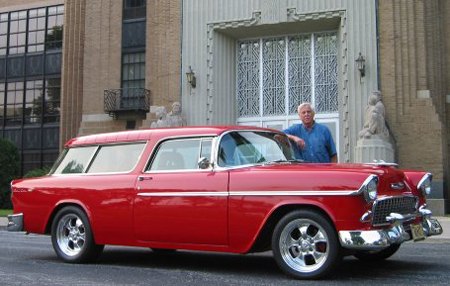














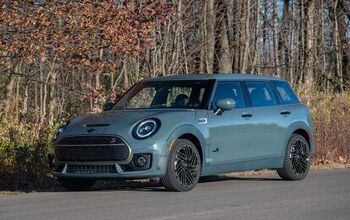
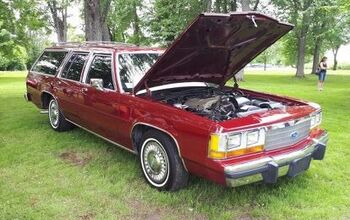
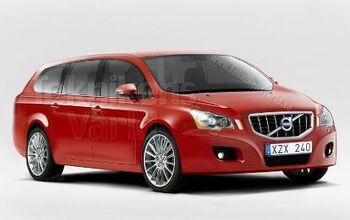

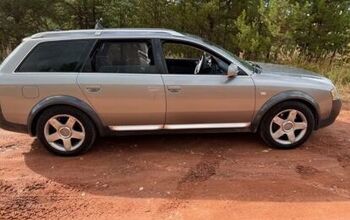











Comments
Join the conversation
Martin - true, but I just don't like the looks of recent Volvos. I guess what I'm lamenting is any attempt by a US badge to design and market a visually appealing reasonably-sized mainstream wagon. The closest we've been offered recently: the Focus wagon, which wasn't a bad attempt, but is now quite dated; the Malibu Maxx, which just looks like Chevy couldn't decide between a wagon and a hatch; the PT Cruiser, which is small but useful and stylish (if you like the look); Magnum, which is sold more for its Hemi and bling factor than utility. On a recent trip to Canada, I could swear I spotted a Chevy Cobalt wagon. Maybe I was seeing things, but if not, why wouldn't it at least be offered in the states?
Oh, and Matrix/Vibe. But, in my mind they slot in the same smaller group as Mazda3, A3, Rio5, etc. Not as much utility in that size.